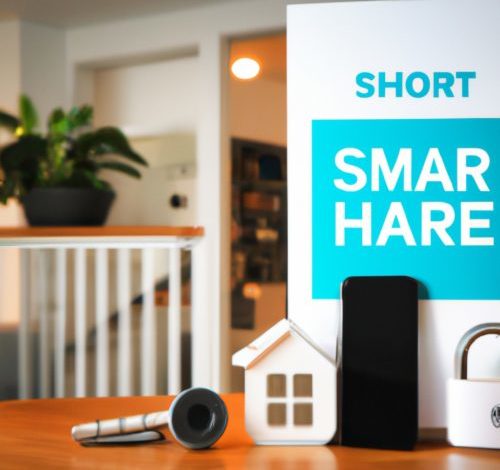
Secure Your Smart Home: Tips for Safe Device Use
Smart Homes: The Future is Here!
Smart homes are becoming increasingly popular as technology advances. They offer unparalleled convenience, allowing you to control everything from your thermostat to your security system with just a few taps on your smartphone. However, with convenience comes risk. Smart homes are vulnerable to hacking, and if you’re not careful, you could be putting your data and your family’s safety at risk. In this article, we’ll give you some tips on how to secure your smart home.
Protect Your Home with These Easy Tips
First and foremost, make sure that your Wi-Fi network is secure. Use a strong password and change it regularly. Also, consider enabling WPA2 encryption if your router supports it. This will add an extra layer of protection to your network.
Another easy tip is to disable any features that you’re not using. For example, if you’re not using your smart speaker’s microphone, consider turning it off. This will reduce the risk of someone eavesdropping on your conversations.
Watch Out for Vulnerabilities & Risks
Smart homes come with a lot of vulnerabilities and risks. For example, many smart devices are vulnerable to hacking, and if they’re not updated regularly, they can become more vulnerable over time. Other risks include phishing attacks, malware, and data breaches.
To mitigate these risks, consider using a security solution specifically designed for smart homes. These solutions can help you identify vulnerabilities and take action to protect your devices from hacking attempts.
Keep Your Passwords Strong & Secure
Passwords are the gatekeepers of your smart home. It’s important to choose strong passwords that are difficult to guess. Avoid using common phrases or words, and consider using a password manager to generate and store your passwords.
Additionally, never reuse passwords across multiple accounts. If a hacker breaches one account, they could potentially gain access to all of your other accounts as well.
Update Your Smart Devices Regularly
Smart devices are constantly evolving, and new vulnerabilities are discovered all the time. That’s why it’s important to keep your devices updated with the latest firmware and security patches.
Most smart devices will automatically check for updates and install them when they become available. However, it’s still a good idea to check for updates manually on a regular basis.
Control External Access to Your Network
If you’re using smart devices that require external access, such as security cameras or smart locks, it’s important to control who has access to your network. Ensure that your devices are password-protected and that you’re monitoring who is accessing them.
You can also consider setting up a separate guest network for visitors, so they don’t have access to your main network.
Use a Virtual Private Network (VPN)
A VPN is a great way to add an extra layer of security to your smart home. It encrypts your internet traffic, making it difficult for hackers to intercept your data. Additionally, it can help to hide your IP address, making it more difficult for hackers to target you.
Enable Two-Factor Authentication (2FA)
Two-factor authentication adds an extra layer of security to your accounts. Instead of just using a password, you’ll also need to enter a code that’s sent to your phone or email. This makes it more difficult for hackers to gain access to your accounts, even if they have your password.
Use Only Trusted Apps & Services
When setting up your smart home, it’s important to only use trusted apps and services. Be wary of third-party apps that aren’t from reputable developers, and avoid using apps that ask for unnecessary permissions.
Additionally, be cautious when downloading apps from app stores. Look for reviews and ratings, and only download apps that have a high rating and a lot of positive reviews.
Keep Your Smart Devices Disconnected
When you’re not using your smart devices, consider disconnecting them from the internet. This will reduce the risk of someone hacking into them while you’re away. Additionally, it’s a good idea to turn off any features that you’re not using, such as voice recognition or geolocation.
Educate Your Family Members About Safety
Finally, it’s important to educate your family members about smart home safety. Make sure that everyone in your household knows how to use your devices safely and securely. Teach them about the risks associated with smart homes, and show them how to take steps to protect themselves.
Secure Your Smart Home Today!
In conclusion, smart homes offer unparalleled convenience, but they also come with risks. By following these tips, you can help to protect your smart home from hacking attempts and other security threats. Remember to keep your passwords strong and secure, update your smart devices regularly, and use only trusted apps and services. By taking these simple steps, you can enjoy the convenience of a smart home without putting your data or your family’s safety at risk.









